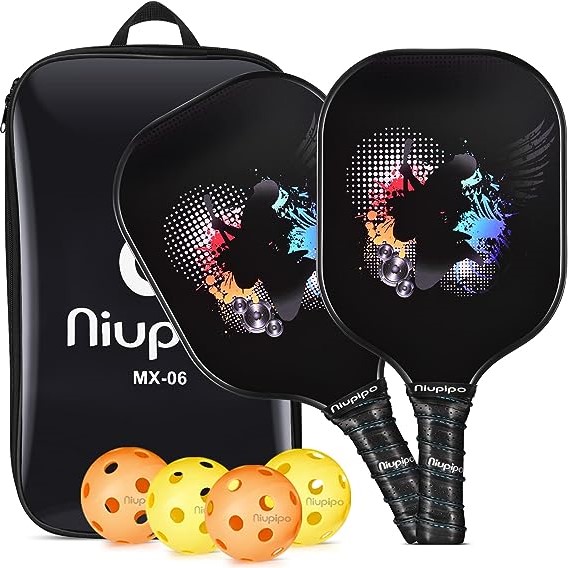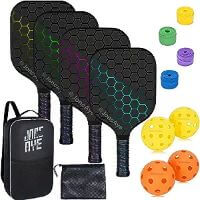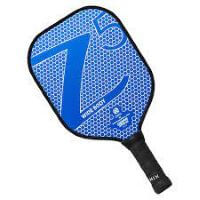Are you interested in learning more about the pickleball game? If so, you’ve come to the right place! Today we’ll be discussing dink shots in pickleball: what they are, why they’re important, and how to do them.
In this article, we’ll discuss what is a dink shot in pickleball, when it should be used during a game, how to do it properly, and other tips for improving your overall performance on the court.
So grab your racket and let’s dive into all things dink shot related!
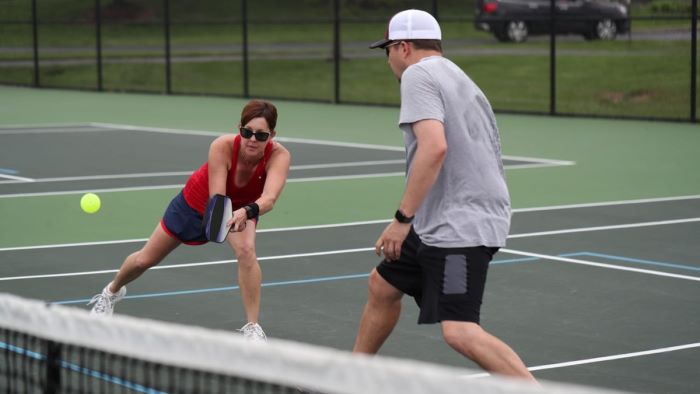
You Might Also Like:
What Is the Purpose of Dinking in Pickleball?
The purpose of a dinking shot in pickleball is to keep the ball low and slow, making it difficult for your opponent to return. This shot is also known as a “half volley,” and is commonly used when your opponent is at the non-volley zone line (NVZ).
A dink shot can be hit with either a forehand or backhand stroke, but it’s important to make sure you don’t go too hard. Additionally, this type of shot can be used tactically as part of an advanced strategy. For example, by using a dink shot after hitting an overhead smash.
Dinking can also help you regain control of the game if you find yourself out of position after hitting a deep drive or lob.
How to Play a Dink Shot in Pickleball?
Playing a dink shot in pickleball is a great way to keep your opponent off guard and maintain control of the game.
To do this, start by placing the paddle slightly behind the ball and use an underhand motion to hit it lightly with a soft stroke. Ensure that you make contact with the ball just above its center for maximum accuracy and control. When hitting, be sure to keep your paddle low and parallel to the court surface for optimum power.
Additionally, try making small adjustments when necessary as you practice this technique more often.
Remember that timing is key when executing a dink shot, so focus on keeping your shots consistent throughout each rally.
With patience and practice, mastering this amazing defensive tool will give you an advantage in pickleball matches!
When Should You Dink in Pickleball?
Generally speaking, it is best to hit a dink shot when your opponent is far away from the net. Plus, you are close enough to make contact with the ball without having to stretch too much.
It should also be used when your opponent is off balance or has committed too early so that they cannot get back in time for the return shot.
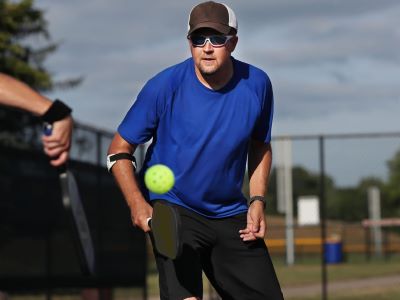
Additionally, if you are serving and there isn’t enough space for an aggressive serve then use a dink shot. It can be a great way to put pressure on your opponent and gain the upper hand.
The dink shot should also be used when you are playing defensively. As they provide an easy way to keep the point going without having to commit too much energy.
What Is the Difference Between a Dink and a Drop Shot in Pickleball?
There are two main shots used in pickleball: the dink shot and the drop shot. This table will compare the differences between these two shots, for your better knowledge.
| Factors | Dink Shot | Drop Shot |
| Technique | Hit the ball softly and low over the net, usually just above waist height. | Hit the ball very softly and low over the net, usually just above ankle height. |
| Purpose | Used to keep an opponent from getting to a shot or as a defensive maneuver. | Used to force an opponent off balance or out of position for a return shot. |
| Power | Low | Very low |
| Result | Slower, longer rallies | Shorter rallies |
| Location | Close to the net | Far from the net |
| Spin/Rotation | Little to none | A heavy backspin can be added for more control |
| Difficulty | Easier | Harder |
| Recommended for | Beginners and players with slower swings | Advanced players and those with faster swings. |
| Best Used | When opponents are far away from the net | When opponents are close to the net |
| Rules | No rules against using dink shot | Drop shots should not be hit too hard to be considered legal, as per the USAPA rules. |
| Scoring | Not usually a scoring shot | Used as a scoring shot, if done correctly. |
Technical Tips for Hitting Dinks Like a Pro
Are you looking to improve your pickleball dink shot? With practice and the right technique, it’s possible to become a pro at hitting this important shot.
Here, we have jotted down 12 technical tips for hitting dink shots like a pro in pickleball. Get ready to up your game!
- Make sure your paddle is in the correct position for dinking. Move it lower than usual and keep it near your body.
- Keep your grip neutral and relaxed, with a slight bend in the wrist to give you greater control.
- Use short, quick strokes when hitting a dink shot to minimize power and maximize accuracy.
- Use short, quick strokes when hitting a dink shot to minimize power and maximize accuracy.
- Stand close to the net, so you can make adjustments quickly if needed.
- Place your shots carefully, aiming toward an open area of the court.
- Focus on keeping the ball low over the net with spin, rather than hitting hard or flat shots.
- Vary between different types of dinks (e.g., forehand/backhand/third-ball drop)
- Practice your footwork to position yourself quickly and accurately when going for dink shots.
- Aim to hit the ball just over the kitchen line, as this will give you more control and allow you to put more spin on it.
- Make sure you stay calm and focused when playing dink shot. As this will help you make better decisions and increase your accuracy.
- Utilize spin when hitting dink shots.
- Work on your hand-eye coordination and reaction time to hit dink shot quickly and accurately.
Lastly, remember to have fun and enjoy the game!
FAQs
To practice dink shots in pickleball, start by standing with your feet shoulder-width apart and your paddle held out in front of you. Make sure you are standing close enough to the net that a dink shot will reach it. Now, hit the ball lightly back and forth over the net in short bursts until you have mastered the timing and ball placement. Once you feel comfortable, move further away from the net and focus on hitting more powerful shots further across the court.
The first rule of dinking in pickleball is to keep the ball low and slow. Dinking requires short, accurate shots that land close to the net. Players should aim for a soft touch, and hit the ball softly with a backspin. It is important to practice good technique when dinking as it can be a difficult skill to master. Additionally, players should always remember not to hit too hard or too high, as this will make it easier for your opponent to return the shot.
The ideal dink shot placement for the court should be close to the net, as it is a short and controlled shot. Furthermore, shots that are close to the net are easier to control due to their shorter distance. The ball should also be placed in an area where there is less open space around it, as this makes it more difficult for opponents to anticipate or block the dink shot. Additionally, placing the ball toward one side of the court will make it more difficult for defenders to get in a good position, and anticipate your next move.
Dinking shot is an important skill to master in pickleball. It requires precision and accuracy, allowing players to hit the ball into tight spaces and reach hard-to-reach places on the court. By mastering this technique, players can move their opponents around more effectively, making it easier to win points.
Well, It’s a Wrap!
The goal of a dink shot in pickleball is to make it difficult for your opponent to return it, without leaving them exposed for an easy volley or lob. It’s important to practice hitting these shots accurately, so you can use them effectively during play.
With practice and consistency, you can master the art of dinking shots in pickleball!

I am the founder of BallSportsPro, a popular pickleball resource for players of all levels. I am a former professional tennis player, started playing pickleball in 2009 and quickly fell in love with the game. I launched BallSportsPro in 2018 to share my passion for the sport and to provide pickleball players with the latest news, tips, and gear reviews. Today, BallSportsPro is one of the most popular pickleball resources on the web, reaching hundreds of thousands of players each month. In addition to running the website, I also a regular contributor to Pickleball Magazine and a member of the USAPA Pickleball Ambassadors program.

